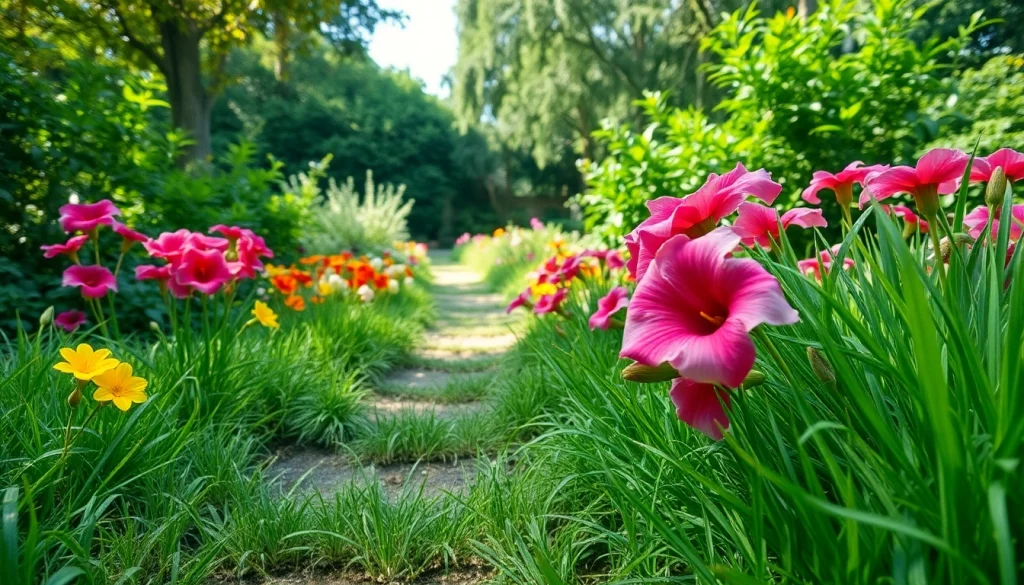1. Introduction to Landscaping Company Pricing
Understanding the intricacies of landscaping company pricing can be perplexing for homeowners and property managers alike. Whether you are considering a simple garden makeover or a complete landscape overhaul, knowledge of pricing structures can greatly influence your decision-making process. This article aims to demystify landscaping company pricing and provide you with the tools necessary to make informed choices regarding your landscaping projects.
1.1 The Importance of Understanding Costs
Understanding landscaping costs is vital for several reasons. Firstly, it helps you to set a realistic budget that aligns with your expectations and financial situation. Knowledge of costs empowers you to identify high-quality service providers, enabling a more informed decision when considering contractors. By comprehending various pricing structures, you can avoid unpleasant surprises that often arise from hidden fees or unexpected expenses.
1.2 Common Pricing Structures in Landscaping
The landscape industry features a variety of pricing models, which can be broadly categorized into several structures. Some of the most prevalent pricing structures include:
- Hourly Rates: Many companies charge based on the number of hours worked, which can vary widely depending on the complexity of the project and the skill level of the labor involved.
- Project-Based Pricing: This method entails providing a flat rate for an entire project, often reflecting the estimated cost of labor and materials involved.
- Per Square Foot Pricing: Common for installation projects, this model charges homeowners based on the area that needs landscaping.
1.3 Factors Influencing Pricing
Several factors can affect the overall pricing of landscaping services. These include:
- Scope of Work: Larger projects requiring extensive labor and specialty materials will generally incur higher costs.
- Geographical Location: Pricing can fluctuate significantly between urban and rural areas, and even from one region to another based on local market conditions.
- Material Costs: The type and quality of materials selected, such as plants, soil, and hardscaping elements (like stone or concrete), can drastically influence the overall cost.
- Experience Level: More experienced landscaping companies may charge higher fees but often provide superior quality and reliability.
2. Average Pricing Models for Landscaping Services
2.1 Hourly Rates vs. Project-Based Pricing
When evaluating landscaping costs, it’s essential to understand the distinction between hourly rates and project-based pricing. Hourly rates can range from $50 to $150 per hour, depending on factors such as the service provider’s reputation and the intricacy of the task at hand. This option may benefit smaller jobs requiring skilled labor without a significant time investment.
On the other hand, project-based pricing provides a comprehensive cost estimate for completing a larger or more complex project. It’s calculated based on labor, materials, and potential overhead costs and can offer a clearer understanding of the total investment by avoiding surprise charges later in the process.
2.2 Geographic Pricing Variations
Geographic variation is a crucial element in landscaping pricing. For instance, urban areas often have higher labor and operational costs, which can multiply service pricing. In contrast, rural areas might reflect lower costs due to lower demand and competition.
To better understand pricing in your specific area, consider conducting local market research. This may involve soliciting quotes from several companies or reviewing neighborhood projects within your vicinity to ascertain the going rates.
2.3 Example Pricing Scenarios by Service Type
As you evaluate your landscaping needs, it can be beneficial to consider pricing based on specific services:
- Lawn Installation: Expect to pay anywhere from $1 to $5 per square foot, depending on sod type and installation complexity.
- Plant Installation: Plant prices can vary widely, but an average cost could be around $50 to $100 per plant, plus labor fees.
- Hardscaping: Costs for hardscape installations like patios or walkways generally range from $10 to $30 per square foot, influenced by materials and design intricacy.
3. Evaluating Your Landscaping Needs and Budget
3.1 Assessing Your Space and Requirements
Before making any commitments, assess the specific needs of your property. Take stock of your existing landscape, identify any challenges such as poor soil quality or drainage issues, and determine what you wish to achieve with your landscaping project. Engage in discussions with landscaping professionals for their insights regarding what is feasible and beneficial for your space.
3.2 Setting a Realistic Budget for Landscaping
Determine a budget based on your assessment of needs and the average costs discovered through research. Your budget should encompass not only labor and materials but also potential unforeseen expenses that may arise during the project’s execution.
As a general guideline, homeowners often allocate 5% to 10% of their home’s value for landscaping. This perspective can help in determining how much you are willing to invest compared to the potential uplift in property value.
3.3 How to Balance Quality and Cost
Striking a balance between quality and cost is essential in making the right choice for your landscaping projects. While lower prices may be appealing, they may not offer the standard of quality you desire or need. Prioritize companies known for their reliability, creative designs, and customer satisfaction. Ask for references and portfolio samples before committing to a provider.
4. Questions to Ask Your Landscaping Company
4.1 Inquiring About Pricing Breakdown
To gain a clearer picture of what you are paying for, it is highly advisable to request a breakdown of pricing from your landscaping company. Understanding how costs are distributed among labor, materials, and any other fees will help uncover whether the quote is reasonable and if it aligns with industry standards.
4.2 Discussing Payment Terms and Conditions
Understanding payment terms is vital. Familiarize yourself with the required deposit, any milestones for payments, and what the policy is regarding final payments upon project completion. Having this information helps to avoid potential disputes or misunderstandings later.
4.3 Understanding Warranty and Maintenance Costs
Inquiring about warranties on both labor and materials can provide peace of mind when investing in landscaping. After all, quality landscaping involves ongoing care, so ask about maintenance services the company offers and their associated costs. Knowing these aspects upfront will help you budget accordingly for the long term.
5. Conclusion: Making Informed Decisions on Landscaping Pricing
5.1 Recap of Key Points on Pricing
Understanding landscaping pricing is a multifaceted aspect—one that encompasses various pricing structures, geographical influences, and a multitude of factors affecting final costs. The insights provided here aim to empower you to make informed choices that meet both your landscaping vision and budgetary restrictions.
5.2 Tips for Getting the Best Value
To secure the best value for your investment, consider obtaining multiple quotes, verifying company credentials, and taking the time to assess whether the services offered align with your expectations. Always remember to look beyond price alone and focus on value delivered in terms of quality and service.
5.3 Resources for Further Assistance
Leverage online resources, local landscaping associations, and community forums to gain further insights and guidance as you navigate the complexities of landscaping company pricing. These tools can provide invaluable feedback and enhance your understanding to make the best choices for your landscaping needs.


